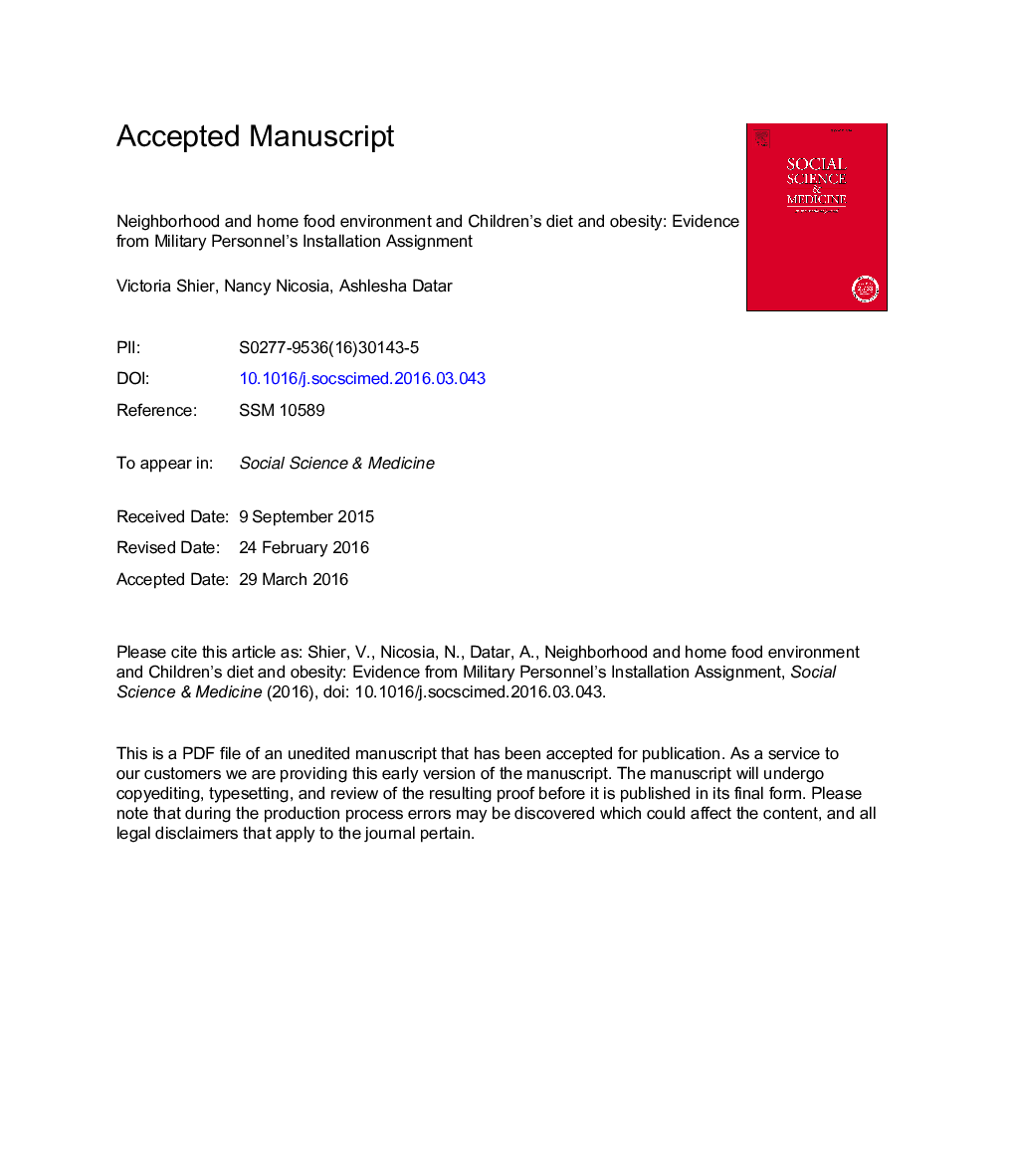| کد مقاله | کد نشریه | سال انتشار | مقاله انگلیسی | نسخه تمام متن |
|---|---|---|---|---|
| 7330174 | 1476011 | 2016 | 43 صفحه PDF | دانلود رایگان |
عنوان انگلیسی مقاله ISI
Neighborhood and home food environment and children's diet and obesity: Evidence from military personnel's installation assignment
ترجمه فارسی عنوان
محله و محیط زیست غذای خانه و رژیم غذایی کودکان و چاقی: شواهد مربوط به تأسیسات پرسنل نظامی
دانلود مقاله + سفارش ترجمه
دانلود مقاله ISI انگلیسی
رایگان برای ایرانیان
کلمات کلیدی
ایالات متحده آمریکا، شاخص توده بدن، چاقی دوران کودکی، محیط غذا، رژیم غذایی،
موضوعات مرتبط
علوم پزشکی و سلامت
پزشکی و دندانپزشکی
سیاست های بهداشت و سلامت عمومی
چکیده انگلیسی
Research and policy initiatives are increasingly focused on the role of neighborhood food environment in children's diet and obesity. However, existing evidence relies on observational data that is limited by neighborhood selection bias. The Military Teenagers' Environments, Exercise, and Nutrition Study (M-TEENS) leverages the quasi-random variation in neighborhood environment generated by military personnel's assignment to installations to examine whether neighborhood food environments are associated with children's dietary behaviors and BMI. Our results suggest that neither the actual nor the perceived availability of particular food outlets in the neighborhood is associated with children's diet or BMI. The availability of supermarkets and convenience stores in the neighborhood was not associated with where families shop for food or children's dietary behaviors. Further, the type of store that families shop at was not associated with the healthiness of food available at home. Similarly, availability of fast food and restaurants was unrelated to children's dietary behaviors or how often children eat fast food or restaurant meals. However, the healthiness of food available at home was associated with healthy dietary behaviors while eating at fast food outlets and restaurants were associated with unhealthy dietary behaviors in children. Further, parental supervision, including limits on snack foods and meals eaten as a family, was associated with dietary behaviors. These findings suggest that focusing only on the neighborhood food environment may ignore important factors that influence children's outcomes. Future research should also consider how families make decisions about what foods to purchase, where to shop for foods and eating out, how closely to monitor their children's food intake, and, ultimately how these decisions collectively impact children's outcomes.
ناشر
Database: Elsevier - ScienceDirect (ساینس دایرکت)
Journal: Social Science & Medicine - Volume 158, June 2016, Pages 122-131
Journal: Social Science & Medicine - Volume 158, June 2016, Pages 122-131
نویسندگان
Victoria Shier, Nancy Nicosia, Ashlesha Datar,
